Why Won't My LiquaCast® Mold Harden?
Castaldo LiquaCast RTV jewelry molding rubber WILL CURE if the proportions have been mixed properly and cure temperatures are correct.
Unlike traditional silicone rubber molding materials which allow wide latitude in mixing proportions, the proportions of LiquaCast Part A & Part B must be MEASURED PRECISELY. Proportions cannot be guessed, estimated or judged by eye.
If you have left the rubber to cure in a cold or cool area the solution is simply to remove the mold to a warmer area or increase the temperature of the mold making area by any reasonable means. A common source of such problems are automatic thermostats, which reduce the temperature of rooms at night in order to save energy.
LiquaCast will cure at low temperatures, but very slowly.
If your molds will not cure or are too soft at any reasonable temperature , you have measured Part A and Part B improperly or not mixed thoroughly.
A common cause of improper measuring is proportioning the two parts by volume, instead of by weight. Typical volume measures you SHOULD NOT USE are: liquid ounces, cubic centimeters (cc’s), liters or milliliters. A liquid graduate measures volume and is NOT appropriate for this product!
Common measure of weight that you SHOULD USE are: ounces (avoirdupois), troy ounces, grams, pennyweights & grains. These are measured on a SCALE.
Another common point of confusion is the need to mix 1 part A to 10 parts B. This means 11 parts of the final mix, not 10 parts! For example: 1 gram part A and 10 grams part B = 11 grams total. This seems obvious but is often the source of problems.
Yet another common mistake is forgetting to consider the weight of your mixing container. Remember, you must SUBTRACT THE WEIGHT OF THE MIXING CONTAINER. The easiest way to do this is weigh the container and then set your scale to zero (“tare” ) before adding rubber.
One method to avoid confusion is to set a target of, for example, 200 grams of the final mix. Calculate 1/11th of that at 18.18 grams. Place that much Part A in the mixing bowl ( after re-setting the scale to zero ). Fill with Part B until your scale reads 200 grams.
Sometimes the outside of the model is cured properly but the top and/or inside of the mold is soft. This is the result of INADEQUATE MIXING. The liquid rubber at the bottom of the mixing bowl has escaped mixing and, since it is the last to be poured into the mold, remains at the top or in the center and never cures.
To avoid this problem attempt to mix the rubber in a round-bottomed mixing bowl or one without corners at the bottom.
How to Rescue your Model
Your first attempt should be to heat the uncured mold in an oven at about 200 – F /128 – C for an hour. The mixing proportions are wrong, but they might be close enough to do SOMETHING. In any case, there is no harm in trying.
If that does not work your only choice will be to physically remove as much of the uncured liquid rubber as possible without destroying the model.
Use paper towels, disposable plastic spoons, etc., to remove as much uncured liquid rubber as possible. Remember to line your work area with paper towels or newspaper and wear rubber gloves as this is a messy process. Rubber that gets on your clothes is very difficult or even impossible to remove. Rubber that gets on tools, work surfaces, etc., can be dissolved with denatured alcohol — the alcohol that is sold in paint and hardware stores, not the pharmaceutical alcohol sold in drug stores.
If your model is made of metal, glass, stone, ceramic or other heat-resistant material, remove as much uncured rubber as possible as described above and then burn the remaining uncured rubber with a match , cigarette lighter or other small, relatively cool flame. The rubber will burn to ordinary carbon ash, which can be cleaned off with a stiff brush, ordinary solvents and ultrasonic cleaners.
CAUTION
This technique can be done safely but care must be used. Make sure all the alcohol has dried off – it is flammable and sometimes even explosive. The fumes and smoke from burning rubber should not be inhaled – make sure to do this outside, near an open window or in a room with adequate ventilation. And note that the burning rubber will DRIP and that THE DRIPS WILL BURN!
If your model is not heat resistant, your only choice is continued soaking in denatured alcohol and physical removal with brushes, tools, etc.
If your model is made of wax, please note that wax will DISSOLVE IN ALCOHOL and you should avoid any but the most minor contact between the model and the alcohol. Unfortunately, your only choice in this case is physical removal.
Further information
For more information, please see the LiquaCast instruction sheet that was supplied with the product or go to the Using LiquaCast web page.




